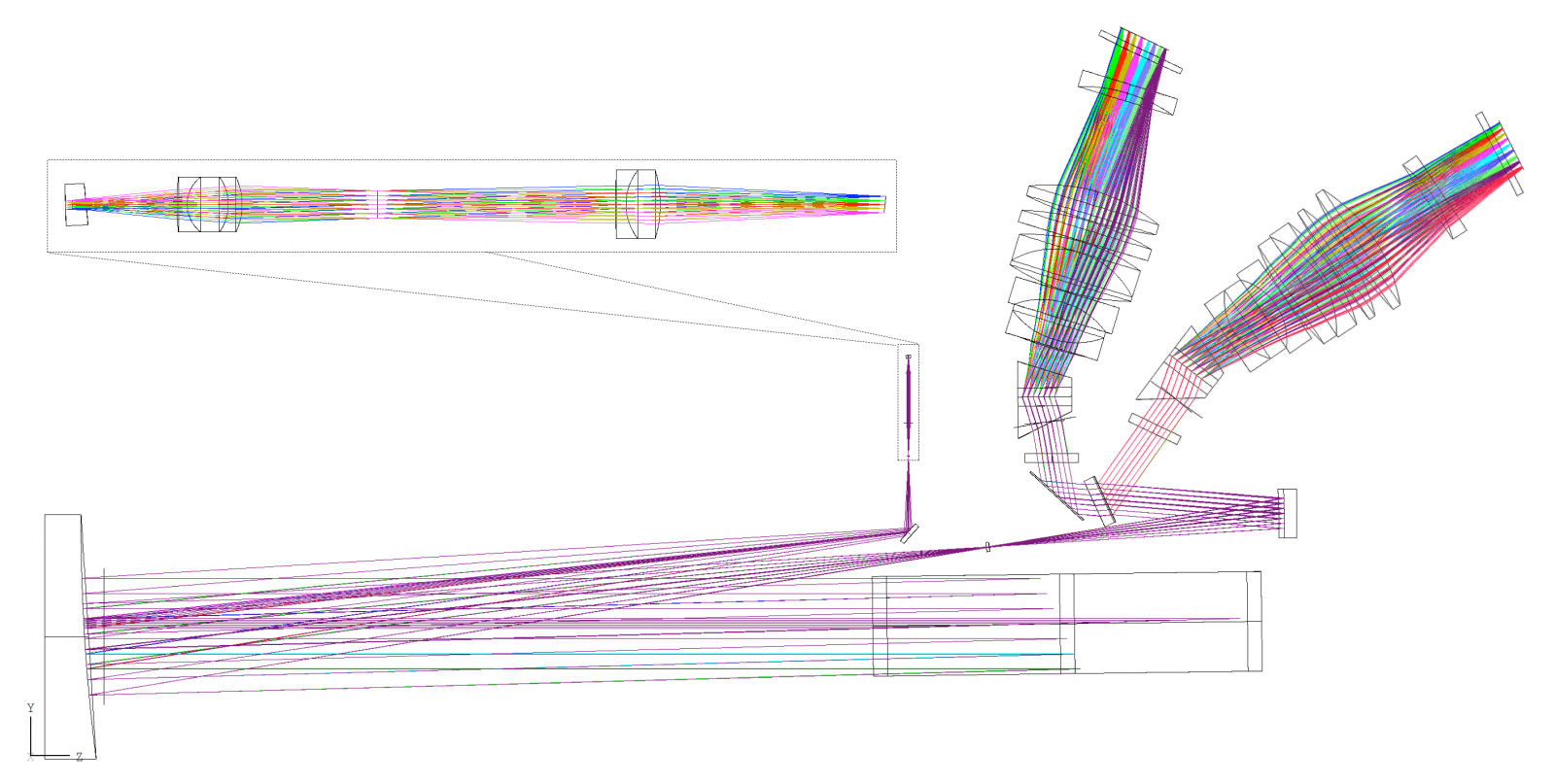Documents
The primary reference documents for citations to the performance and design of FLAMINGOS-2 will be found here. Until then, please cite:
"FLAMINGOS-2: the facility near-infrared wide-field imager and multi-object spectrograph for Gemini", S. Eikenberry, R. Elston, S. N. Raines, J. Julian, R. Corley, K. Hanna, D. Hon, R. Julian, D. Rashkin, B. Leckie, W. R. Gardhouse, M. Fletcher, J. Dunn, & R. Wooff, 2004 SPIE 5492, 1196
Documents
Below is the full list of papers describing GNIRS. If you use GNIRS for your publication please reference #9 (Elias et al., 2006, SPIE, 6269, 36) and #10 (Elias et al., 2006, SPIE, 6269, 138). Note that the original design paper (#1) is obsolete as some aspects of the as-built instrument are significantly different than the design described in this paper.
Virtual machine image for running IRAF under recent MacOS releases
A CentOS 7 virtual machine image (OVA file) is now available to facilitate running Astroconda IRAF under MacOS 10.15+, which no longer supports running the necessary 32-bit binaries natively. This comes with Anaconda 2019.10, Gemini IRAF 1.14, DRAGONS 2.1.0 and other packages from Astroconda pre-installed. Users of MacOS 10.14 affected by the Tk bug that causes a desktop session logout when displaying graphics may also want to install this guest distribution as a workaround.
Exposure Time Estimation
About
The GRACES Integration Time Calculator (ITC) can be used to determine limiting magnitudes, exposure times, S/N ratios, background levels, etc., for all the available GRACES configurations, any kind of observing conditions, and various types of targets.
DRAGONS v2.1.1 - Bug Fix Release Available
We announce the availability of a DRAGONS v2.1.1, a bug fix release.
DRAGONS, Data Reduction for Astronomy from Gemini Observatory North and South, is Gemini's new Python-based data reduction platform. DRAGONS offers a more streamlined approach to the data reduction of Gemini data, compared to the Gemini IRAF package.
Try a new game during the lockdown!
Now that most of us have to work from home and find creative things to do on week-ends, Gemini is giving you the opportunity to download the Gemini Card Game! If you did not have the chance to get yours already, you can now download the deck, print it, read the rule book and play!
Performance Monitoring
Attention
Links on this page are not working yet.
Rationale
- To monitor periodically, on both sites, critical instrumental characteristics such as throughput, image quality, and detector cosmetics. The two main motivations are to oversee the general health of the Gemini telescopes and instruments as well as to improve the quality of Gemini data products.
Description & Goals
Gemini Observatory has an assorted suite of instruments, each requiring a specific set of measurements in order to ascertain that ideal conditions for operation are met. In the links below a summary of all the measurements contained in "wish lists'' elaborated by the various instrument scientists is presented. The frequencies quoted for each kind of observation may need to be adjusted on the basis of the observed time scales for variation of the different features.
Components
Echelle Spectrograph:
The core component of MAROON-X is a modified version of the KiwiSpec R4-100 spectrograph by KiwiStar Optics of New Zealand. The instrument was designed to deliver a resolving power of R~80,000 for a 100um wide pseudo-slit at f/10 with 3.5 pixel sampling across a wavelength range of 500-920nm spread over two camera arms. A Zemax layout of the spectrograph is shown in the figure below.

Fiber Feed and Pupil Slicer:
Light arrives at the spectrograph in two 100um (0.77") octagonal fibers at f/3.33. One fiber carries the stellar light, the other the sky background. The spectrograph’s relay optics accept a 50um wide slit at f/5. The slit is made of rectangular fibers, each 50x150um. The sky fiber is directly butted to one of the rectangular fibers, causing 50% slit losses. The light of the object fiber is sliced into 3 sections and projected onto three of the rectangular fibers (see section in Spectroscopy).
Telescope Frontend:
MAROON-X has a frontend unit that converts the f/16 beam from the telescope to an f/3.3 beam to feed the 100um (0.77") octagonal object fiber. Primary (i.e. telescope guiding) is using the PWFS2 of Gemini. The frontend unit is mounted on the bottom port of the ISS, a port shared with NIFS and NIRI.
Calibration System:
MAROON-X has its own calibration system and is not using GCAL. All light sources are fiber coupled and fiber switchers are used to select the light source for the calibration fiber leading up to the frontend (for calibration of the object and science fiber) and for the simultaneous calibration fiber.
Light sources include a Tungsten-Halogen lamp for flatfielding and a Photron ThAr arc lamp for wavelength calibration. For precision RV measurements, the ThAr lamp alone is not adequate.
What happened to the website?
As you can see, the Gemini website looks quite different! Over the last few years, we have worked on a complete remodeling of the site structure. The ultimate goal is to make the most relevant information more visible, and more accessible. By the way, try to see it on your tablet or your phone!
Calibrations
Calibration sources include dark, flat, ThAr arc, and etalon comb frames. All sources are part of the instrument calibration system and GCAL sources are not available.